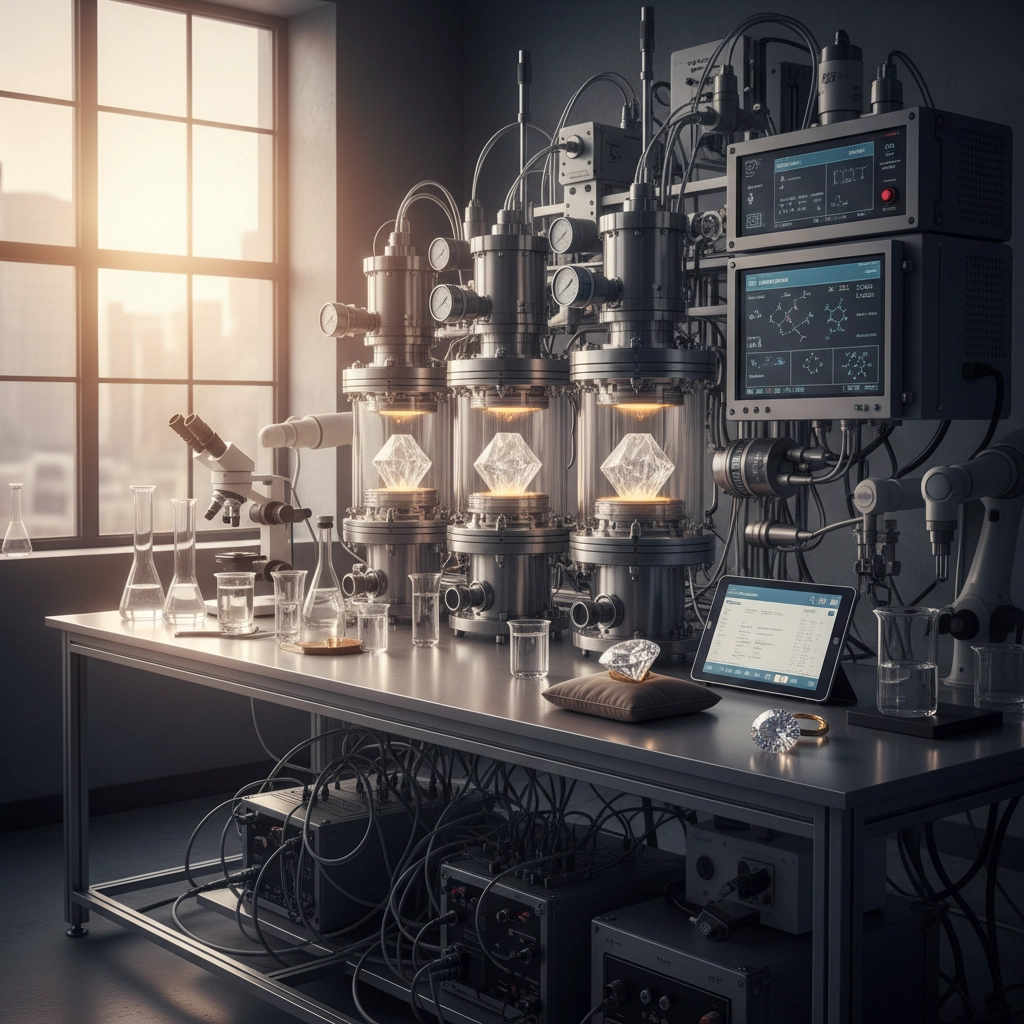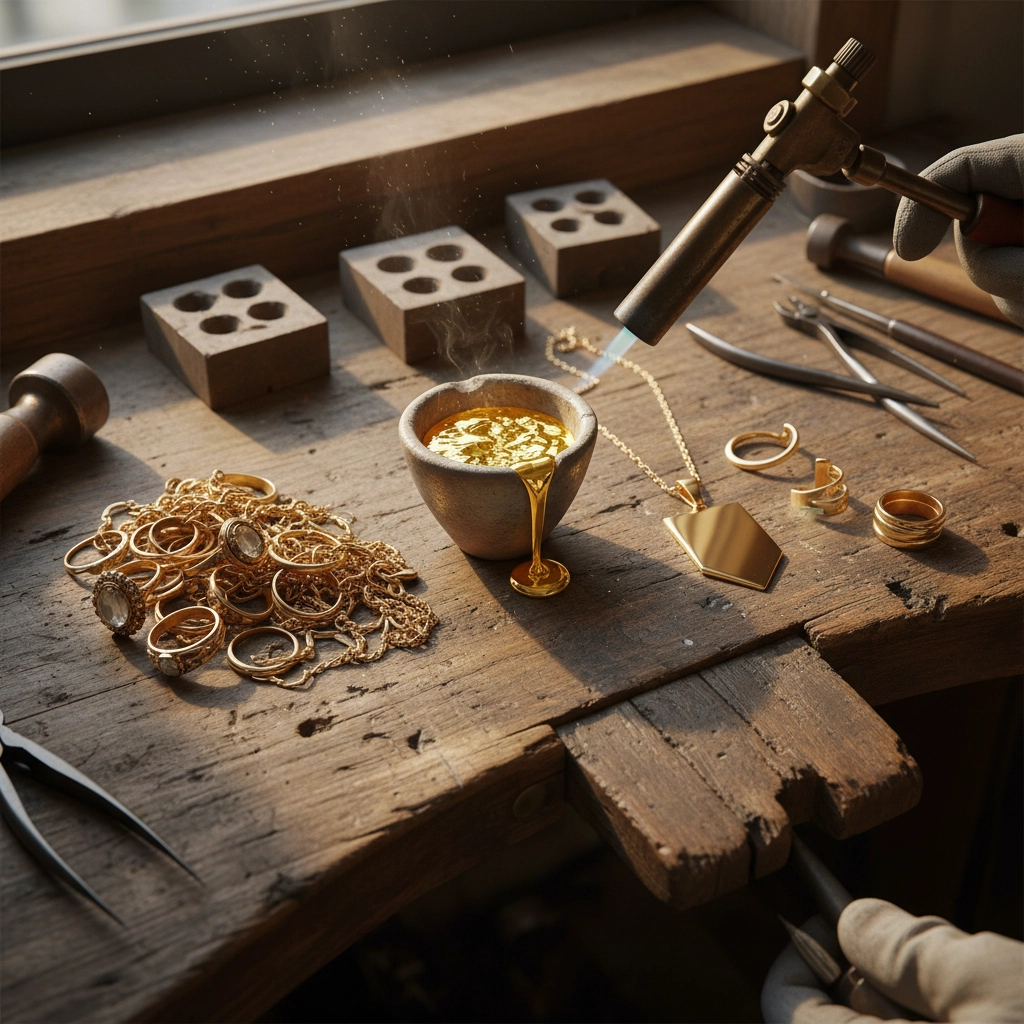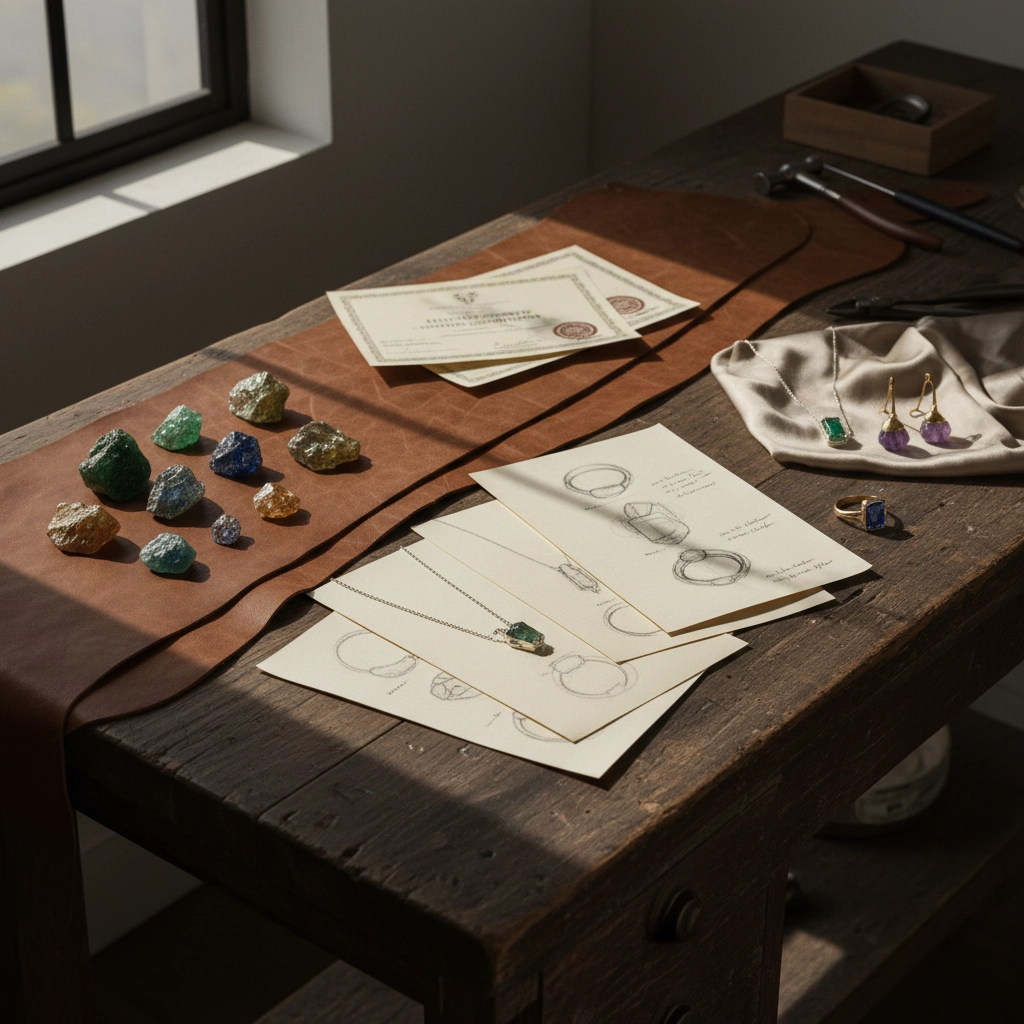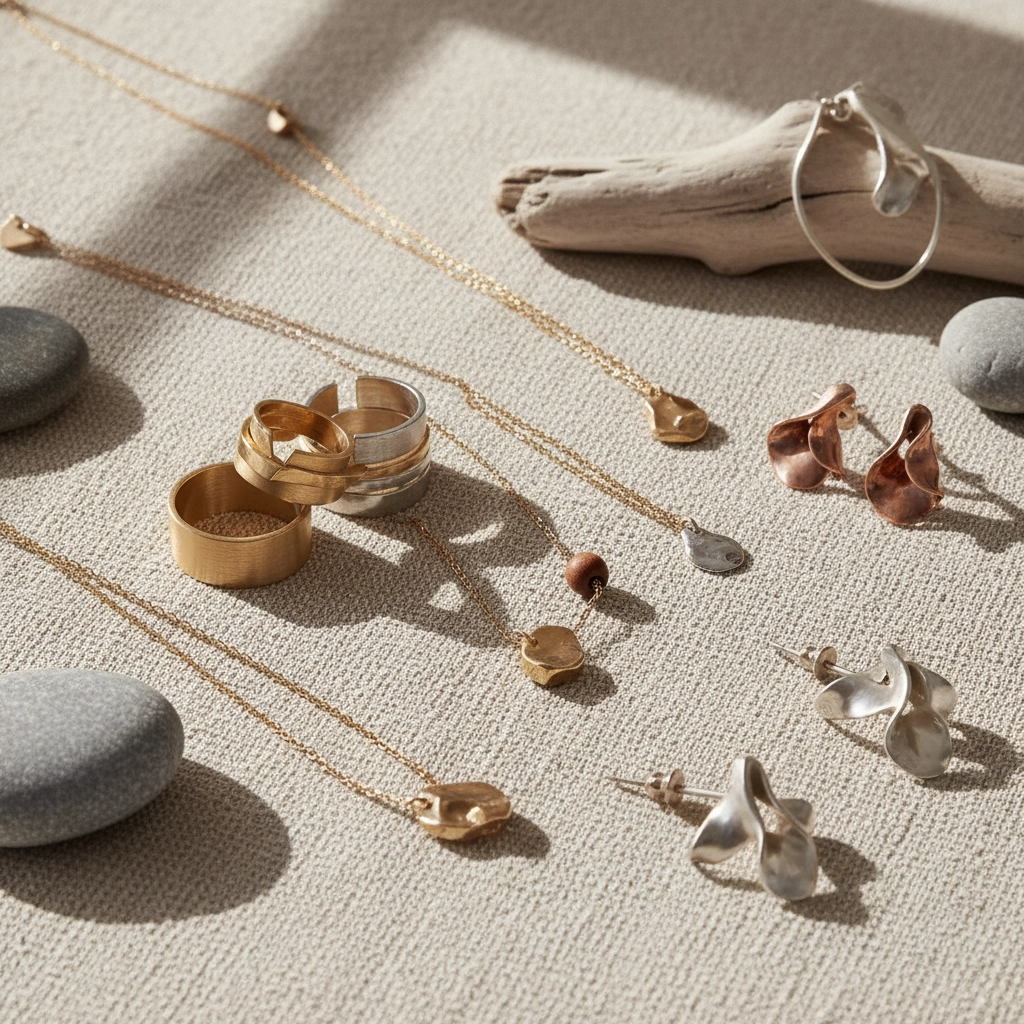Modern Era Jewelry (2000s–Today): Part 2 of 4: Sustainability & Ethics: Jewelry for a New Generation
A beautifully crafted piece of contemporary sustainable jewelry featuring recycled gold and ethically sourced gemstones, representing the modern commitment to responsible luxury in today's jewelry market.
Welcome back to our Modern Era series! In Part 1, we explored how jewelry design broke free from traditional rules. Now, in Part 2 of 4, we're diving into something that's completely transformed our industry: and honestly, it's been one of the most exciting changes I've witnessed in my years at Peter's Vaults.
Have you ever stopped to think about the story behind the jewelry you're wearing right now? Where did those materials come from? Who made it? These are the questions that have reshaped jewelry from the 2000s onward, and trust me, the answers are more fascinating than you might expect.
The Wake-Up Call: When Jewelry Got a Conscience
Around the early 2000s, something shifted. Suddenly, customers weren't just asking "How much does it cost?" or "Does it look good on me?" They started asking tougher questions: "Where did this diamond come from?" and "Are the people who made this treated fairly?"
This wasn't just a trend: it was a complete mindset revolution. The jewelry industry, which had operated the same way for centuries, suddenly had to face some uncomfortable truths about mining practices, working conditions, and environmental impact. And you know what? The best brands embraced this challenge instead of running from it.
I remember when the first customer asked me about conflict-free diamonds back in 2003. I'll be honest: I didn't have all the answers then. But that conversation changed things for me and shaped how we approach business at Peter's Vaults today.
Lab-Grown Diamonds: The Game Changer You Probably Didn't See Coming
Let's talk about something that still blows my mind: lab-grown diamonds. When I first heard about them, I thought, "How can you grow a diamond in a lab?" It sounded like science fiction. But these aren't fake diamonds or diamond simulants: they're real diamonds with the same chemical composition, crystal structure, and optical properties as mined diamonds.

The difference? They're created in controlled environments using advanced technology, eliminating the environmental destruction and ethical concerns of traditional mining. Plus, they typically cost 20-40% less than mined diamonds while being virtually indistinguishable to the naked eye.
Have you ever held a lab-grown diamond? The sparkle is identical. The hardness is the same. The only way most people can tell the difference is through specialized equipment that detects minor differences in trace elements. Pretty amazing, right?
The Beauty of Recycled Materials: Old Made New
One of my favorite developments has been the rise of recycled precious metals. Think about it: gold doesn't degrade. The gold in your grandmother's wedding ring is just as pure today as it was fifty years ago. So why not give it new life?
Recycled gold jewelry has become incredibly popular, and for good reason. It takes existing precious metals and transforms them into something fresh and contemporary without any additional mining. Some of the most stunning pieces I've seen have been crafted from recycled gold, often with stories that make them even more meaningful.

We're also seeing incredible innovation with other materials. Recycled glass, reclaimed wood inlays, and even upcycled vintage components are being incorporated into modern designs. It's sustainability meets creativity, and the results are absolutely gorgeous.
Transparency: The New Luxury
Today's jewelry buyers are incredibly informed, and they want to know the full story behind their purchases. This demand for transparency has pushed the entire industry to be more open about sourcing, production methods, and labor practices.
The brands that have thrived are the ones that embraced this transparency rather than hiding from it. They provide detailed information about where their materials come from, how their pieces are made, and what their environmental and social impact looks like.

When you're shopping for jewelry today, you can often trace the journey of your piece from mine to market. Some brands even provide photos and stories about the artisans who crafted your jewelry. It's this level of connection and accountability that defines modern ethical jewelry.
Fair Trade: More Than Just a Label
Fair trade in jewelry isn't just about paying fair prices: though that's certainly part of it. It's about ensuring that everyone in the supply chain, from miners to artisans, is treated with dignity and receives fair compensation for their work.
Instead of exploitative practices, you see sustainable mining techniques, proper safety equipment, healthcare benefits, and educational opportunities for workers' children. When you buy fair trade jewelry, you're not just getting a beautiful piece: you're supporting entire communities.
Design Philosophy: When Ethics Meet Aesthetics
Here's something that might surprise you: sustainable jewelry isn't about compromising on beauty. In fact, some of the most stunning contemporary pieces I've encountered have been created with sustainability at their core.
Modern designers are proving that ethical sourcing and innovative materials can actually enhance creativity rather than limit it. When you're working with recycled materials or lab-grown stones, you often have more freedom to experiment with unique colors, textures, and designs that might not be available in traditionally mined materials.

The minimalist movement has particularly embraced sustainable practices. Clean lines, geometric shapes, and focus on quality craftsmanship align perfectly with the sustainability ethos of "buy less, buy better." These pieces are designed to be timeless rather than trendy, meaning they'll still look stunning decades from now.
The Millennial and Gen Z Effect
Let's be real: younger consumers have completely changed the game. Millennials and Gen Z don't just want beautiful jewelry; they want jewelry that reflects their values. They're willing to research brands, ask difficult questions, and even pay premium prices for pieces that align with their ethical standards.
This generation has grown up with access to information like no generation before them. They can research supply chains, compare environmental impacts, and connect directly with artisans through social media. This level of transparency and connection has forced the entire industry to step up its game.
Are you part of this conscious consumer movement? Do you find yourself asking more questions about the jewelry you buy than your parents did?
Looking Ahead: Where Ethics Lead Us Next
As we wrap up Part 2 of our Modern Era series, it's clear that sustainability and ethics aren't just temporary trends: they're the foundation of jewelry's future. The brands and designers who have embraced these principles aren't just surviving; they're thriving.
We're seeing incredible innovations on the horizon: new methods for creating lab-grown colored stones, advances in recycling technology that can recover precious metals with even greater efficiency, and blockchain technology that can trace the journey of every component in a piece of jewelry.
This is just the beginning. In Part 3, we'll explore how technology is revolutionizing jewelry design and manufacturing in ways that would have seemed impossible just a few years ago. From 3D printing to AI-assisted design, the future of jewelry is more innovative than ever.
But for now, take a look at the jewelry you're wearing today. What's its story? Where did it come from? And more importantly, does it reflect the values you want to support? Because in today's jewelry world, every purchase is a vote for the kind of industry we want to build.
Stay tuned for Part 3 of 4, where we'll dive into the technology revolution that's reshaping how jewelry is designed, made, and experienced.
Cheers,
Peter